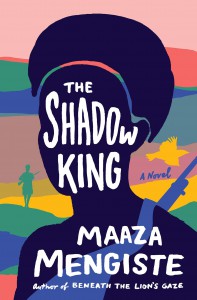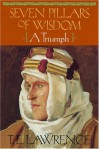Currently reading
"THE SHADOW KING" IS HERE, THERE, EVERYWHERE!

From reading “THE SHADOW KING”, I developed an ambivalence about it that is hard to explain. Nevertheless, I will try to do so. The novel is set in Ethiopia during 2 critical periods in its history. It begins in 1974 as the country totters on the brink of revolution amid student protests and the scourge of drought in much of the countryside.
One of the main characters in “THE SHADOW KING” is Hirut, a quiet yet strong and resolute woman, who, in her youth had led a humble existence as a servant in the home of a prominent community leader (Kidane). She is sitting in a railway station in Addis Ababa, awaiting the arrival of a Italian photographer (Ettore Navarra), who decades earlier, had played a somewhat adversarial role against Hirut in particular – and against Ethiopia, in general.
The novel then shifts to 1935, where the reader experiences the younger Hirut and the dynamics of her relationships with Kidane and his wife Aster, a rather headstrong woman who feels neglected by her husband and looks upon Hirut as the unwelcome ‘third wheel’ in the marriage. Hirut has little freedom and when Kidane took away the vintage rifle with which her father had once taught her to shoot – for the use of one of the men in a militia unit he is forming because of the likelihood of an impending Italian invasion --- she harbors a deep resentment towards him.
With Italy’s invasion of Ethiopia, the nature of the relationships among Kidane, Aster, and Hirut changes considerably. Both women come to assume more prominent roles as part of a insurgent resistance movement to Italian control. Kidane is both a strategist, as well as a battlefield commander with his coterie of junior resistance leaders to assist him in bringing more people into the resistance and in carrying out harassing raids against scattered Italian units so as to acquire additional arms with which to continue the struggle.
The crucial element in keeping the resistance alive is what comes to be known as “the shadow king”. This is a brainchild of Hirut when she discerns one day by chance that one of her comrades bears a striking resemblance to the nation’s emperor, Haile Selassie. A plan is then concocted by Kidane of dressing this man in some of the formal clothing of the emperor which someone in the resistance had managed to obtain earlier. This “shadow king” would accompany the resistance group wherever they travelled from their mountain hideout to show the people that the Emperor Haile Selassie – contrary to reports that he had left the country and was living in exile in Britain – was very much with them in their fight to free Ethiopia from Italian rule.
Ettore Navarra is a soldier in his early 20s assigned to Ethiopia, where he carries out various photographic assignments (he is already a skilled photographer) for his commander, a colonel known for the infamous work he had done in Libya in securing ‘native pacification’ there. It is in this role that Ettore encounters Hirut – along with Aster. I won't divulge how that comes about. But as often happens in war, destinies of various people can become interlocked in unexpected ways.
I appreciate this novel because I learned in some measure from it the impact the Italo-Ethiopian War of 1935-36 had on the Ethiopian people, as well as the harsh methods employed by the Italians to pacify and control the country during the 5 year occupation that followed. What I didn’t much like about the novel was the way the author would tell it. This was done with a thin interface between the narrator and the characters. I must admit I’m not a fan of the narrative voice in novels. I want to know the characters directly via their inner thoughts and outer actions. I don’t like feeling that I’m being shielded from them in a way by a narrator, whom by its very presence, puts itself up as a ‘god in the novel’. That’s why I’m giving “THE SHADOW KING” one less star than I would have given it otherwise, were its characters given the freedom to fully express themselves.













